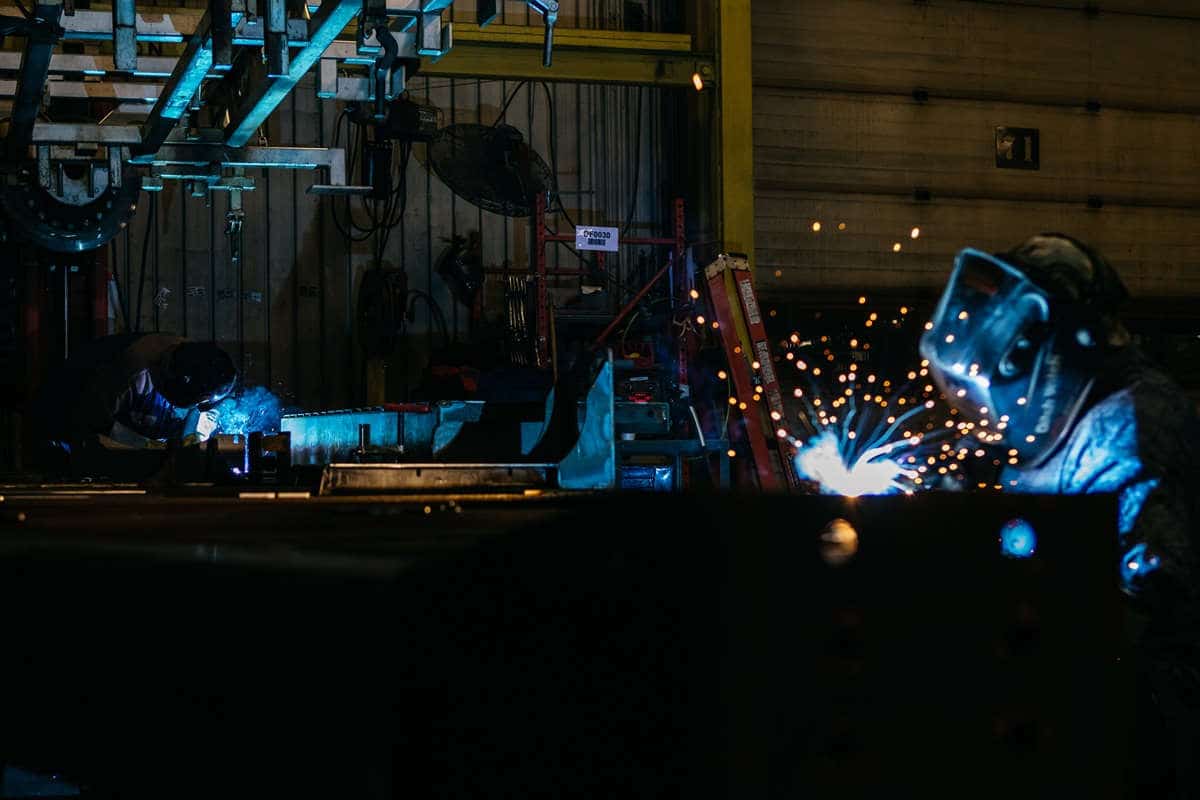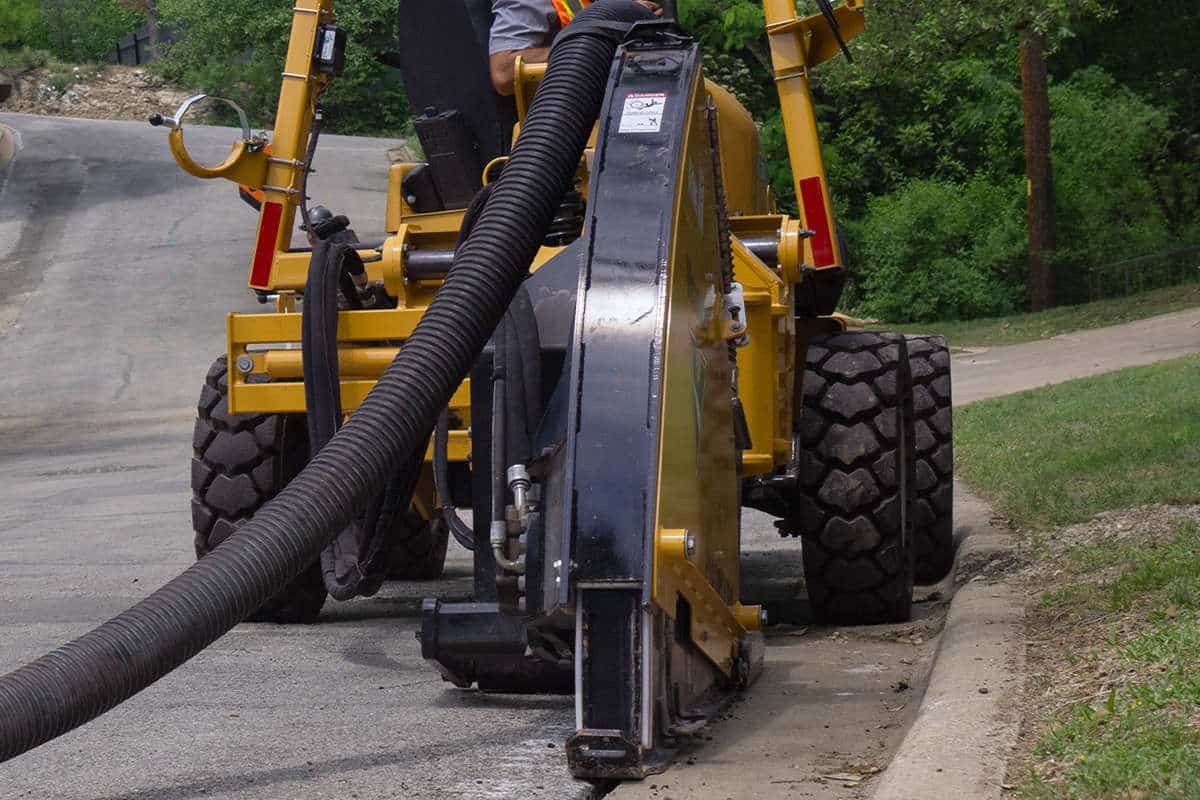Trenching the Streets of Long Island
Michael Beyer is the president of Bancker Construction Corp., a company with a history of over 100 years on Long Island, New York. “The company was purchased by my father in 1958, so it’s been in our family for 60 years,” explains Michael. “The company started out primarily as a water main contractor. In the 70s we diversified and developed our telecommunications division. In the 80s, we ramped up with gas main work, and in the 90s, electric work. Today, we are an industry leader of infrastructure construction for various utilities throughout Long Island and New York City.”
The Tigercat street trencher is an important tool in Bancker’s operations. “As a contractor, you have many different tools in your belt to deal with many different challenges that come with each application. We utilize many different types of milling machines, pavement cutters and trench cutters,” says Michael. The road strata also varies considerably. Bancker crews are routinely dealing with asphalt roads that can range from 4 to 16 in. thickness. Even more challenging are road surfaces with asphalt over a concrete composite pavement or a reinforced concrete.
“So, depending upon the type of road that we are working on, and the utility that we are putting in, we consult our tool belt to determine the best tool for the job. The Tigercat trencher has been an asset we can take anywhere. We were on a project in Brooklyn, directly adjacent to the Brooklyn Navy Yard a few years back. We encountered 20 in. of reinforced concrete and asphalt and the machine cut 400 ft in about two to three hours.” Michael confirms that it was the toughest application he has come across and the machine performed without issue. In a more typical scenario, the machines can produce around 500 ft per hour with a 30 in. wide drum.
Michael recalls the day 18 years ago when he first saw a Tigercat T750 street trencher. “We were invited to see it in operation on another contractor’s project. We were told to arrive at the site around 8:30 and that the machine would be set up and ready to go. We pulled up at the site, and we saw the machine on the trailer. We looked at our watches and it was about 8:40, and I said, ‘Well I guess they aren’t ready yet.’ We got out of the car to walk over and as we were passing the machine we saw the entirety of the trench had already been cut. I asked, ‘What happened?’ Turns out they cut the whole job – 12 in. of asphalt, 350 ft of trench – in about 15 minutes. We were sold, and we bought the machine, to some degree sight unseen.”
Bancker purchased that first T750 over 17 years ago. Today it is still running strong and is entirely original aside from some wear plates that were installed on the drum. Even the tires are original. “It’s pretty impressive, the machine was literally just in our shop getting a normal service and we were discussing the fact that everything is original on the machine.” Bancker has purchased a total of four Tigercat street trenchers, most recently, a new T726G that went into service in June 2018.
“As far as we are concerned, there is no equal to this machine,” says Michael. “One of my veteran operators, who has 30 years with us, was the first to run our newest machine and he called me to tell me the cab is even nicer than it was on past machines. The cab environment and operator comfort is second to none. The instrumentation is fantastic and he was very impressed by the cameras. He is fully able to see his surroundings.” Michael also notes that the in-cab noise has been greatly reduced with the new cab design and that the cab interior is far more ergonomically correct.
The specialized job that the Tigercat street trencher performs can certainly be accomplished with different equipment in a more traditional way. The process involves individual saw cuts to the pavement, double cutting and stripping up the road in chunks and then loading and disposing it. However, Michael explains that in New York, disposal costs have skyrocketed and like everywhere, there is a much greater emphasis on recycling.
“We are grinding up the material and we are no longer disposing of the material in chunks.” In some cases the material can be reused as backfill. “If we can’t, we can dispose of it, but we are not paying for that void volume created by those large debris chunks. When we are paying to dump 20 yards of material out of a truck, we are actually disposing 20 yards of material.” Bancker is seeing two tremendous advantages: 1) the speed in getting the job done; and 2) significantly less handling and more efficient handling of the material removed from the trench.
RELATED: Ditch Witch Introduces Heavy-Duty HT275 Trencher
“It’s a huge advantage. We can cut our trucking costs down. I have one less truck on the road than I would if we were handling the material in chunks. It reduces our disposal costs. And often we are able to reuse this material as opposed to having to change it out with new material.”
The burning question is how does a company justify capital expenditures on multiple machines that are only operating at most a couple hours per day? Michael explains the logistic complexities. “We do start the machines at 7:00 and by 7:30 they are parked for the day because they have already milled out the productivity goals for the day. The machines are very fast in their productivity cycle. The problem is, we have a lot of crews out there and unfortunately, everybody is starting at the same time in the morning. We don’t have the ability to move the machine to multiple locations each day.”
Michael continues, “There are machines that are cheaper than the Tigercat out there. There is no doubt about it. But no other machine can do what this machine is able to do. We place this machine based upon the type of roadway that a particular crew is working on. If certain crews are only working in 4 to 5 in. of material, we can put a less superior machine at that location. But we strategically place the Tigercat machines where we have thicker roadways.”

The original T750 street trencher evolved from another discontinued machine, the M760 mulcher, a high horsepower carrier designed for demanding high-duty cycle, off-road land clearing and right-of-way applications. Often working in time-sensitive operations such as oil exploration and pipeline developments that are intolerant to downtime, Tigercat mulchers operate in a tough environment and often pile on hours quickly. In order to maintain high production and high uptime, it’s all about maximum horsepower to the attachment, excellent heat rejection capabilities and ample steel in the right places.
“We only buy the best equipment, we put the money up front for the best equipment. I expect very fine things when you are putting that capital expense out front, so I have no problem with making a complaint. I have not had downtime with these machines. So you bring them into an urban environment, where you are not pushing them. They are so over-designed. The other day we took delivery of our newest machine and it was unloaded and parked next to the 18-year-old machine. The new one has state-of-the-art technology and all of the bells and whistles as compared to the old one. But they’re still made with all steel, there is no fiberglass on the machines. They are so overdesigned for the work that they do, for the applications that we are putting them through. They have stood the test of time. They are probably one of the most reliable machines that we own and, per hour, the lowest cost of ownership of any machine that we have out there right now.”
Michael explains that in general, as technologies have improved, the issues that the fleet maintenance people used to experience with engines and hydraulics have mostly gone away. “With other machines we do have reoccurring issues with pins and bushings and things like that. With the Tigercat machines, I haven’t replaced a hose, let alone pins and bushings. Everything is original. We run them 12 months a year and they are out there every day working. We haven’t had the problems that we have had with other pieces of equipment doing the same type of application.”
StreetWorks, based in Durham, Connecticut, and Street Industries, located in Long Island, New York, are the nationwide agents for Tigercat Street Trenchers. Brian Marksohn is the principle owner of Street Industries. “From the day I met Brian, almost 18 years ago to today, Street Industries has been there for us.”
Michael relates once having an issue while changing out a drum. “I think within two hours of the phone call, Brian himself was out here with my mechanic, working with a tool in hand. A couple of hours later they had the drum changed. Brian has continued to amaze me and through the years we have maintained a good friendship. He is on the jobs and he is intimately engaged with his equipment and his clients. I have nothing but the finest things to say about him and his company.”






